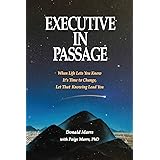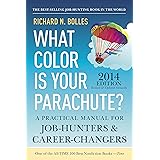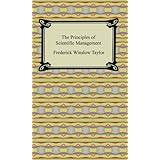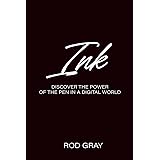The accompanying video visually underscores a critical aspect of interview preparation: professional document handling. This often-overlooked non-verbal communication dramatically impacts candidate perception. While spoken words convey intent, haptic and proxemic cues transmit subconscious signals to hiring managers. Mastering these subtle interactions provides a distinct competitive advantage in the rigorous recruitment process. Effective document presentation is not merely procedural; it is a strategic element of impression management, signaling meticulousness and respect.
The Subtlety of Professional Document Handling
First impressions are formed rapidly. Research indicates these judgments occur within seconds of initial interaction. Non-verbal cues account for a significant portion of this evaluation. Poor document handling can quickly negate strong verbal performance.
Hiring managers observe every detail. They assess your executive presence and attention to detail. Mishandling materials creates a negative cognitive bias. This bias can unconsciously undermine your candidacy.
Psychological Impact of Haptic Cues
Haptic communication involves touch and handling. Your interaction with documents conveys hidden messages. A crumpled resume or fumbling through papers suggests disorganization.
Conversely, presenting pristine documents smoothly projects confidence. This demonstrates professional composure. Studies show that candidates exhibiting strong non-verbal alignment with their verbal message are perceived as more credible. Approximately 55% of communication is non-verbal, highlighting its importance.
Proxemics and Document Exchange
Proxemics concerns the use of space. How you hand over documents matters significantly. Reaching awkwardly or invading personal space can create discomfort.
A smooth, deliberate pass with appropriate eye contact is crucial. It establishes a respectful interaction. This subtle act reinforces your professional etiquette. It confirms your understanding of interpersonal dynamics.
Pre-Interview Document Protocol: Meticulous Preparation
Effective document handling begins long before the interview. Preparation is paramount. Ensure all materials are in impeccable condition.
This includes resumes, portfolios, and reference lists. A professional folder or portfolio is highly recommended. It protects documents and facilitates organized presentation.
Document Integrity and Presentation
Print all documents on quality paper. Use a laser printer for crisp text. Avoid any creases, smudges, or dog-eared corners.
Your resume, for instance, should be a pristine artifact. It reflects your personal brand. One survey found that 68% of recruiters notice document condition immediately.
Strategic Organization of Materials
Arrange documents logically within your folder. Place your resume on top for easy access. Follow with supporting materials like a portfolio or project samples.
Anticipate what interviewers might ask for. Organize accordingly. This streamlined approach minimizes fumbling, enhancing your professional image.
During the Interview: A Performance of Precision
The interview is a live performance. Document handling is an integral part of this. Your actions under pressure reveal much about your work style.
Practice presenting and retrieving documents. Make it a fluid, natural movement. This practice builds confidence and reduces anxiety.
Active Engagement with Materials
When discussing your resume, point to relevant sections. Use your finger or a pen to guide their focus. This active engagement keeps them attuned to your narrative.
Maintain eye contact during the exchange. This reinforces your sincerity. It also shows respect for the interviewer’s time and attention.
The Act of Passing Documents
Offer documents clearly, facing the interviewer. Use both hands if appropriate for larger items. This conveys a sense of formality and importance.
Do not slide documents across the table. This is perceived as casual or even dismissive. A deliberate, controlled pass is always preferred.
Specific Document Types and Their Handling Nuances
Different documents demand distinct handling approaches. Understanding these nuances is key. Tailor your presentation based on the material’s purpose.
This shows adaptability and foresight. It further solidifies your image as a detail-oriented professional.
Resume and Cover Letter Presentation
Always bring multiple copies of your resume. Offer one immediately if not already provided. Have a copy for each interviewer present.
Keep your cover letter accessible. Refer to specific points during discussions. This demonstrates preparedness and reinforces your application’s alignment.
Handling a Professional Portfolio
A portfolio requires careful management. Present it open to a relevant section. Briefly explain its contents and significance.
Guide the interviewer through key pieces. Do not hand it over and simply expect them to browse. Maintain control, offering concise explanations.
Written Tests and Assessments
Some interviews include on-the-spot written tasks. Handle these documents with care. Treat them as important reflections of your analytical skills.
Ensure your writing is legible and organized. Present the completed test neatly. This attention to detail extends to all aspects of the assessment.
References and Certificates
Present a neatly compiled reference list if requested. Ensure it is accurate and up-to-date. Keep copies of relevant certificates if they are mentioned.
These documents provide verification of your claims. Their professional presentation strengthens your credibility. It underscores your meticulousness.
Beyond the Interview: Broader Professional Implications
The principles of professional document handling extend beyond interviews. They are vital in various professional settings. This includes client meetings, internal presentations, and collaborative work sessions.
Consistent application of these practices enhances your overall professional reputation. It demonstrates a high level of organizational acumen. This skill is valuable in any professional role.
Meetings and Client Interactions
During client meetings, distributing agendas or reports requires precision. Ensure everyone receives their materials simultaneously. Present them facing the recipient.
This reflects professionalism and respect for attendees. It streamlines the meeting flow. It contributes to a positive impression of your organization.
Internal Presentations and Collaboration
In team settings, share relevant documents efficiently. Avoid haphazardly passing papers. Organized distribution fosters a productive environment.
Using document cameras or shared screens complements physical document handling. This integrated approach ensures clarity. It supports effective collaboration and information exchange.
Practical Mastery: Actionable Steps for Professional Document Handling
To truly master professional document handling, consistent practice is key. Incorporate these actions into your routine. This will elevate your professional presence.
Your meticulousness will be noticed. It will set you apart. Mastery of these soft skills enhances your career trajectory.
Conduct Dry Runs and Seek Feedback
Practice your document handling during mock interviews. Simulate the environment. Pay attention to your gestures and movements.
Record yourself or seek feedback from peers. Identify areas for improvement. Refine your presentation until it feels natural and polished.
Invest in Quality Materials
Use a professional portfolio or folder. Opt for high-quality paper. These small investments project a premium image.
They also protect your documents from wear and tear. This preparedness minimizes unexpected issues during crucial moments. It ensures professional document handling.









